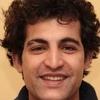Explore all the information on
Heat stress in dairy cattle
Welcome to the page about Heat stress in dairy cattle of Engormix; a source of knowledge on Heat stress in dairy cattle.
The key to managing your herd through heat stress is being ready for it. Watching the weather forecast to understand the Temperature Humidity Index (THI) is the first step in managing heat stress. The color-coded chart and tips list can help you keep your cows comfortable during summer heat. It’s important to provide fresh, cool water (70-86 degrees F.) during times of heat stress so cows can drink enough to hydrate and cool their bodies. Ruminants can drink more than double the...
Comments : 19
Recommendations: 7
The summer of 2020 will be remembered as one of the hottest summers in Israel in decades. The summer heated many agricultural sectors, including the dairy industry. Beyond high heat load conditions throughout the summer, two unusual heat waves stood out in particular. The first heat wave was in May and the second in early September, as can be seen in fig 1. Fig. 1 – average daily milk production (kg) per cow in Israel in 2020. (blue line 2019, red...
Comments : 1
Recommendations: 0


Balchem Animal Nutrition & Health European Seminars Deliver Scientific Insights and Preview New Innovations
Suggested link
Zeelim dairy farm is located in the south of Israel and characterized by desert conditions and low rainfall in winter (100-150 mm/year) November–March. In the last years, recycled water from the big Tel Aviv metropolitan area reached the region by pipelines where fields are cultivated by crops and orchards. This changed dramatically Zeelim climate to much more humid nights and increased general THI. In recent summers, cows experienced heat stress conditions 24/7 for almost 5...
Comments : 15
Recommendations: 6
The climate issue has been in the headlines lately. This article was written in the week that begins in Glasgow, Scotland, the Climate Conference, with the participation of many world leaders announcing the intention to completely eliminate greenhouse gas emissions from burning fossil fuels (coal, oil and gas), by 2050. The global dairy industry is in this context and it is also in the headlines, and people point the finger of blame at the meat and milk industry, in that the emission of...
Comments : 5
Recommendations: 4
Heat stress is considered an influential factor in the profitability of dairy farms, especially in the hot regions of the world. In the first part of my article, previous to this, I described how heat stress impairs cow's performance and farm profitability. In the current article, I plan to show, based on the literature, my own experience and calculations, how proper cooling can reduce the negative effect of heat stress and contribute to increasing farm profitability.
In a survey...
Comments : 2
Recommendations: 1
Heat stress will cost the global dairy sector an estimated $5 billion a year in 2050 (Wankar et al., 2021).To reduce the costs for both the farmer and animal, a more integrated approach regarding production, health and welfare is needed. The key lies in prediction...
Comments : 7
Recommendations: 2
Summer heat stress has been considered in these days as one of the greatest causes for losses in the world dairy sector. Italian Breeders Association (A.I.A.), adopted the Summer to Winter ratio (S:W) index, a heat stress assessment tool based on the ratio between summer (July – September) and winter (January – March) farm performances. S:W ratio has been developed in Israel and adopted recently in Italy and other countries, as a tool for detecting performance pitfalls in summer...
Comments : 0
Recommendations: 0
Adult lactating cows receive more attention when it comes to the negative effects of heat stress, as compared to heifers. This is because lactating cows need to dissipate more heat, running out of milk production and feed consumption and digestion to support it. The losses, caused by exposing adult cows to heat stress conditions include drop in milk production and composition, fertility, health and cow's performance in the subsequent lactation, when exposed to heat stress conditions in...
Comments : 0
Recommendations: 3


Balchem Animal Nutrition & Health European Seminars Deliver Scientific Insights and Preview New Innovations
Suggested link
Heat stress affects dairy cow production and performance. To dial down heat stress, mechanical cooling remains a mainstay. Nutrition is of increasing importance. Research results show how methionine mitigates heat stress. ...
Comments : 0
Recommendations: 4
Summer heat stress negatively affects the dairy sector in Italy by harming animal welfare, increase environment pollution and reduce farms profitability. The decrease in farm profitability is caused by the decrease in cows annual milk production (feed and other expenses per liter of milk are increased when daily production is lower), reduction in milk quality (lower fat and protein content and increase in SCC), direct decrease in feed efficiency (when part of the feed energy consumed...
Comments : 1
Recommendations: 6
Efficient cooling systems based on water evaporation from cow's body surface have been developed in last four decades in dairy sectors of warm climate countries. The main effect of cooling is in reducing the drop in food consumption caused by heat stress, in addition to the normal drop in food consumption in the beginning of lactation, resulted by the mobilization of body reserves and with all its metabolic meanings. Few years ago, we conducted a research in which we studied the...
Comments : 7
Recommendations: 3
Heat stress is considered one of the most influential factors in the profitability of dairy farms, especially in the hot regions of the world. In the conferences and publications that I have published over the years, I mainly dealt with the economic benefits that may arise from the proper installation and operation of the means to dissipate the heat generated by the cows.
The purpose of this article is to raise awareness that the inability to cope with heat stress is of financial...
Comments : 2
Recommendations: 1
This article presents the results of a "cow cooling project", in northern Mexico, characterized by long hot and dry summer months, with the extreme conditions of heat stress in dairy cows. The farms where the cooling project took place are considered as large scale dairy farms, with high-yielding cows from the Holstein breed. The dairy farmers are aware of the existence of a negative effect on the indices of summer production, reproduction and health of the cows and the economic losses...
Comments : 6
Recommendations: 2
Introduction Genetic variability of livestock populations is fading. This is due, in part, to genetic improvement programs (FAO, 1998; Gutiérrez and Goyache, 2005). Boichard et al. (1997) mentioned that change in genetic variability across generations could be described by genealogical characterization; and the conservation and consanguinity status of populations can be monitored (Vicente et al., 2012; Pienaar et al., 2015). Genealogical analysis requires the creation and...
Comments : 0
Recommendations: 0


Balchem Animal Nutrition & Health European Seminars Deliver Scientific Insights and Preview New Innovations
Suggested link
...
Comments : 1
Recommendations: 2
Heat stress has a negative effect, not only on milk production, but also on the cow's metabolism. Periods of high heat stress will become part of the memory of her metabolism and produce negative effects long after the high heat has passed. This is why it is important to equip farms with efficient systems that allow the cow to evacuate a maximum amount of calories from her body during the hottest periods and almost when they are laying in the cubicle which is the most part of the day. The...
Comments : 0
Recommendations: 0
Q: What are the main consequences of heat stress? A: Regarding milk production, there are different factors, not just volume, but also fat content and protein in the milk and quality of the milk;...
Comments : 16
Recommendations: 5
Cooling means to reduce heat stress from cows have been developed over the last four decades in Israel and around the world, and are applied to a different degree of success in many farms in the world. Cooling cows in the farm is based largely on the daily routine, which includes cooling the cows in the waiting yards before and between milking sessions, as well as in the feeding line, around feeding time. In farms with robotic milking, there are no milking hours defined, and each...
Comments : 6
Recommendations: 4
...
Comments : 0
Recommendations: 0
Poultry is a homothermal animal, and its body covers with feathers to increase its cold resistance. However, Taiwan is an island that lies in the tropic of cancer, and the general climate is marine tropical. During summer, this mechanism is adverse to heat dissipation and causes heat stress. Heat stress is a familiar stress effect that will affect animals’ growth performance, productivity, and health. Heat stress affects livestock production results in increased demand for net...
Comments : 3
Recommendations: 3













